Visit Père Lachaise Cemetery –The Most Famous Cemetery in Paris
Discover one of the most beautiful cemeteries in Paris, the Père Lachaise Cemetery.
In the 20th Arrondissement of Paris, the Père-Lachaise Cemetery is a sprawling 44-hectare park (the biggest park in Paris), combining elegant landscaping and semi-wild areas. With more than 70,000 tombs and several fine funerary sculptures, the Père Lachaise Cemetery is the most famous cemetery in Paris and also the world’s most famous cemetery, an open-air museum that is visited by 3 million people yearly!
The list of famous people buried in Père Lachaise Cemetery is long and includes names like Oscar Wilde, Marcel Proust, Edith Piaf, Jim Morrisson, Apollinaire, and more.
But the Cemetery of Père Lachaise’s fame is also due to the legends whose Cemetery is full and secrets jealously guarded by the graves of anonymous and famous people.
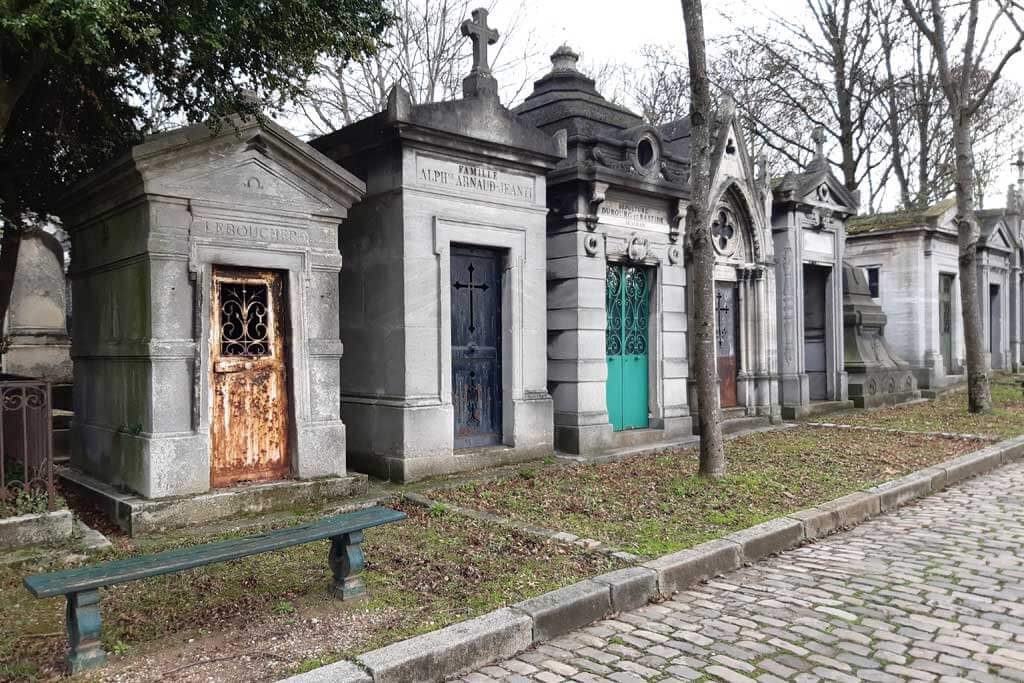
For this alternative Père Lachaise tour, far from the crowds, we will skip the most famous graves in Père Lachaise Cemetery to learn more about the mysteries and legends of some of the characters of the time. You can take this Père Lachaise walking tour anytime, but it’s ideal during Halloween in Paris, perhaps followed by the Catacombs of Paris special tour.
This Père Lachaise tour will cover the more centrally-located burial grounds, which correspond to the most ancient part of the Père Lachaise Cemetery. On top of this, you will also love the fantastic panoramic views over Paris!
History of Père Lachaise Cemetery

With the inner city cemeteries of Paris largely full by the late 18th century, the City made a concerted effort to develop larger cemeteries on its outskirts of Paris. The Cemetery of Père Lachaise was opened under the instruction of Napoleon I in 1804. The site was named after Père François de la Chaise, a Jesuit and the confessor of King Louis XIV, who lived there in the 17th century.
Cemetery of Père Lachaise Map

Here’s the map of Père Lachaise Cemetery with all the stories of this walking tour pinpointed. If you want to extend this Père Lachaise tour, you can pick up a map at the entrance of Père Lachaise that will lead you toward some of the Cemetery’s most famous graves.
Click here to see this Père Lachaise map on Google Maps
Mysteries and Legends of Père Lachaise Tour (Self-Guided)
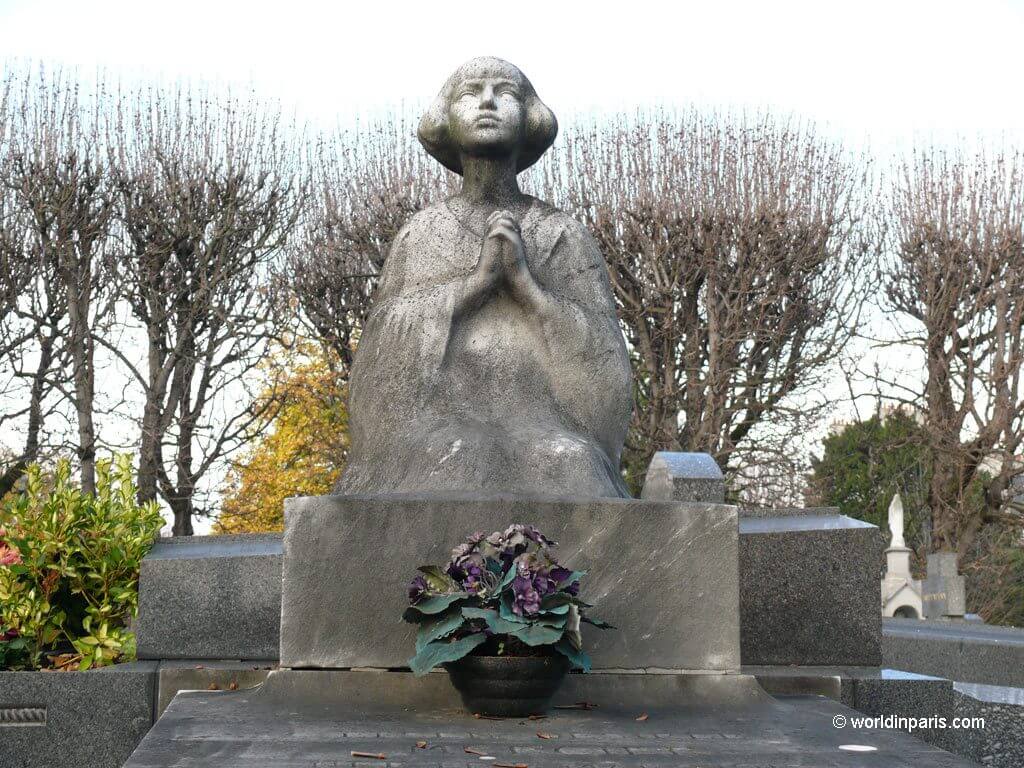
The Père Lachaise is one of the most unique places in Paris to visit. This Père Lachaise walking tour starts from the main access at Boulevard de Ménilmontant. The closest metro station is Père Lachaise (lines 2 and 3).
The Cemetery’s Little Guardian

In French folklore, it is believed that the first person to be buried in a cemetery becomes the guardian of the souls of the place. For those who love this kind of stories, the Père Lachaise Cemetery would be haunted by the spirit of a little girl.
In the Cemetery of Père Lachaise, the title belongs to a five-year-old girl named Adelaïde Paillard de Villeneuve. She was indeed the first to be buried in an individual tomb in 1804, only 15 days after the opening of the Cemetery. This grave no longer exists, as the plot was a temporary concession.
When her temporary concession expired, a gravedigger with a heart too tender to dispose of her little body in the common grave would have reburied her secretly and anonymously in the heights of the Cemetery (tomb #13 on this Père Lachaise map).
Although there is no written proof, an unofficial location is nevertheless maintained in the 42nd Division. This tiny graveyard is located within the limits of Père Lachaise Cemetery, drawn by Brongiart in 1804.
A Very Special Club
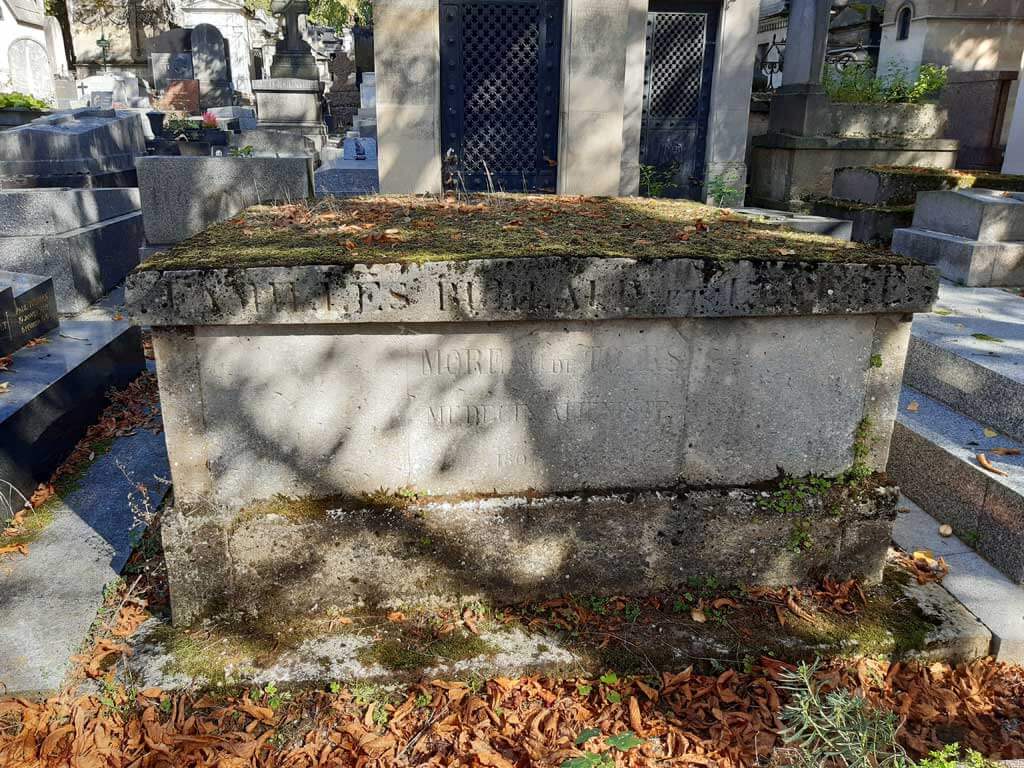
In the 3rd Division of the Cemetery, the tomb of Jacques-Joseph Moreau de Tours (1804-1884), a famous psychiatrist of his time, is often decorated with joints. Here’s the story.
Moreau de Tours was the first physician to do systematic work on drugs’ effects on the central nervous system and to catalog, analyze, and record his observations. He is the founder of the Club des Haschischins, frequented by famous writers and artists like Victor Hugo, Charles Baudelaire, Alexandre Dumas, Gustave Flaubert, and Honoré de Balzac.
The Club’s monthly sessions occurred at the Hotel de Lauzun on the Ile de Saint Louis. The sessions were nicknamed fantasies because the drug was taken in the form of dawamesk, hashish jam mixed with honey, pistachio flour, butter, and cannabis resin. A delicious cake, indeed!
Moreau de Tours ensured that the sessions and consumption went smoothly, which went through three phases: amplification of sensations, distortion of time, and visual hallucinations. He also had to take care of some members, who all of a sudden were tempted to fly through the hotel’s windows!
Through careful observation of people’s reactions to hashish – particularly their openness to suggestions and willingness to consider new possibilities – Moreau de Tours theorized that psychoactive substances could treat or replicate mental illness in a way to help cure patients.
Paris’ Famous Fortune Teller
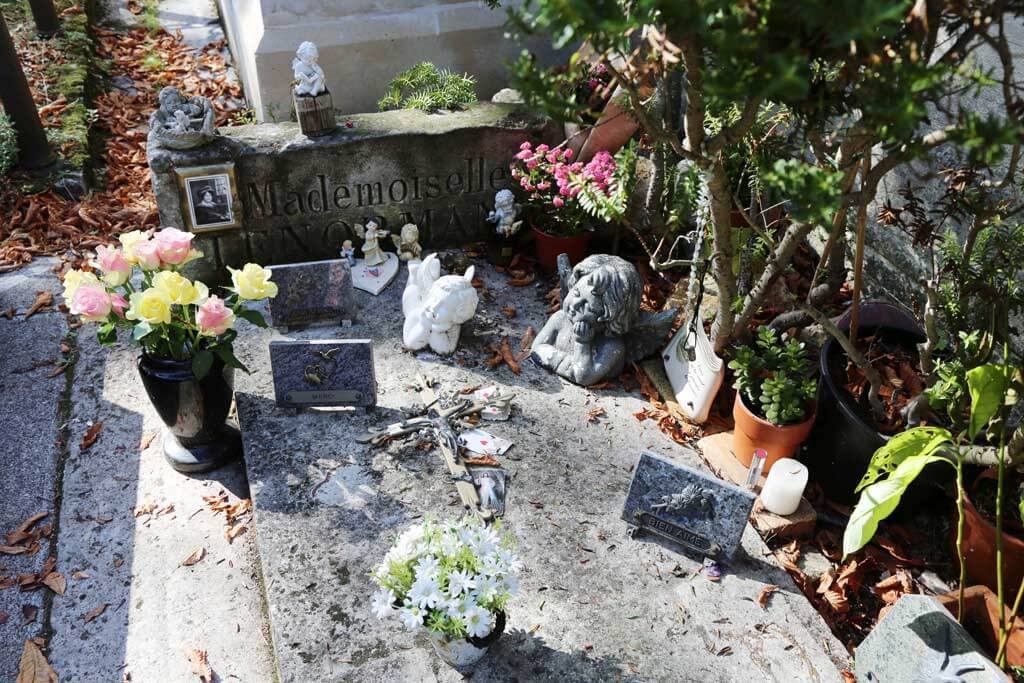
In the 3rd Division are also the remains of Mademoiselle Lenormand (1772-1843), the most famous fortune-teller of her time.
By seven, she was already telling the Benedictine’s fortune in the convent where she lived (much to the nuns’ dismay). She was expelled for that very reason, and she moved to Paris during the first years of the French Revolution.
In Paris, she had a small bookshop at Rue de Tournon where famous figures of the Revolution came to consult her. She predicted the violent death of Marat, Robespierre, and Saint-Just, for which she was imprisoned.
Her short time in prison meant good marketing, and when she left it, all Paris of the Directory came to consult her.
Amongst her clients, Joséphine de Beauharnais asked about one of her pretendants, a “little Corsican officer without fortune and probably without future.”
Miss Lenormand would have replied: “Your little officer has a great future. He will surpass all men of this time. He will associate you with his glory. But beware! This glory will be fleeting, and your love will cost you many tears!”
This “little officer” was Napoléon I, who also became a good client of Lenormand. But he ended up imprisoning her by treason, upset by some of these predictions.
A century and a half after his death, his tomb is still decorated with numerous marks of affection. It is customary for a new fortune teller to come and place his deck on her tomb for one night so that it is charged and guided by the spirit of the one who prophesied in the ear of the powerful.
The American Widow
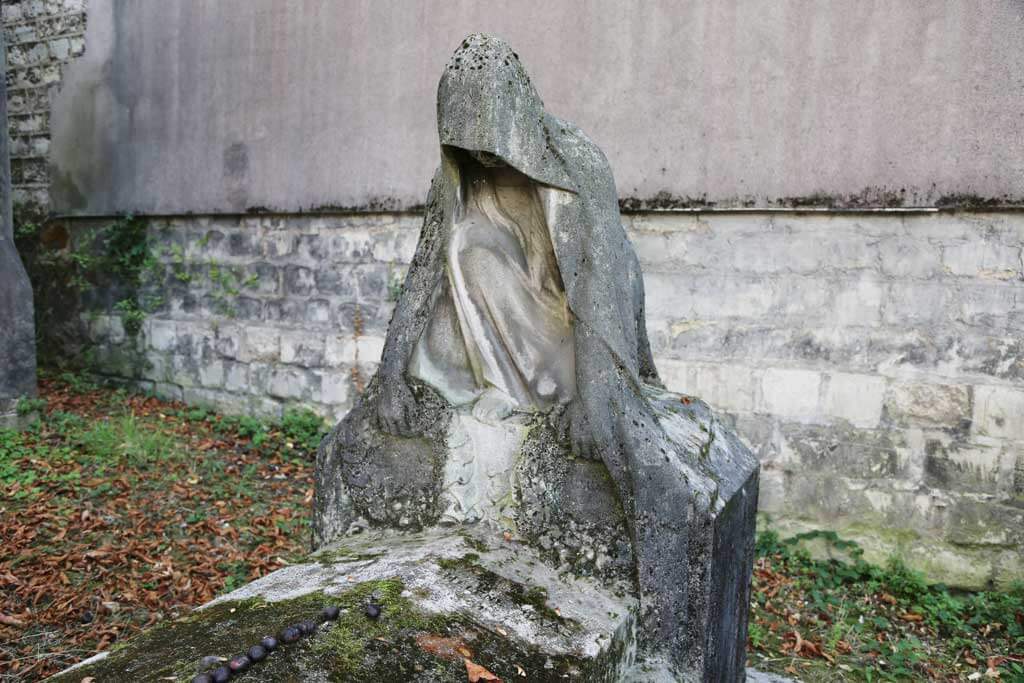
Winifred Parsons was a beautiful and wealthy woman, the daughter of Charles Parsons, president of the Rome, Watertown, and Ogdensburg Railroad. She left New York to come to Paris to join her fiancé, Emile Maas, the director of the Société des Automobiles Passe-Partout.
Emile was waiting for certain formalities to be completed to marry the young girl when he was the victim of a car accident and died. From that day on, Miss Parsons had only the idea of death on her mind.
Winifred rented a room at 72 Avenue de Iéna. Every morning, she came out of her room dressed all in black. She bought flowers and went to cry in the Père Lachaise Cemetery at the grave of her fiancé. She, who was so lively and cheerful before, no longer spoke to anyone.
She announced several times her intention to put an end to this intolerable martyrdom. She acquired a revolver, and for several days, she carried the weapon with her without deciding to use it. But on 22 August 1908, having dressed herself, she got into bed and shot herself in the head.
The police carried out the usual findings and warned the family of the unfortunate young girl. The body remained in the pretty hotel room that morning, scented by the flowers that the young girl had arranged herself before dying. Two months later, Miss Parsons finally joined her beloved fiancé at Père Lachaise (tomb #3 on this Père Lachaise Cemetery map).
A Successful Marketing Strategy
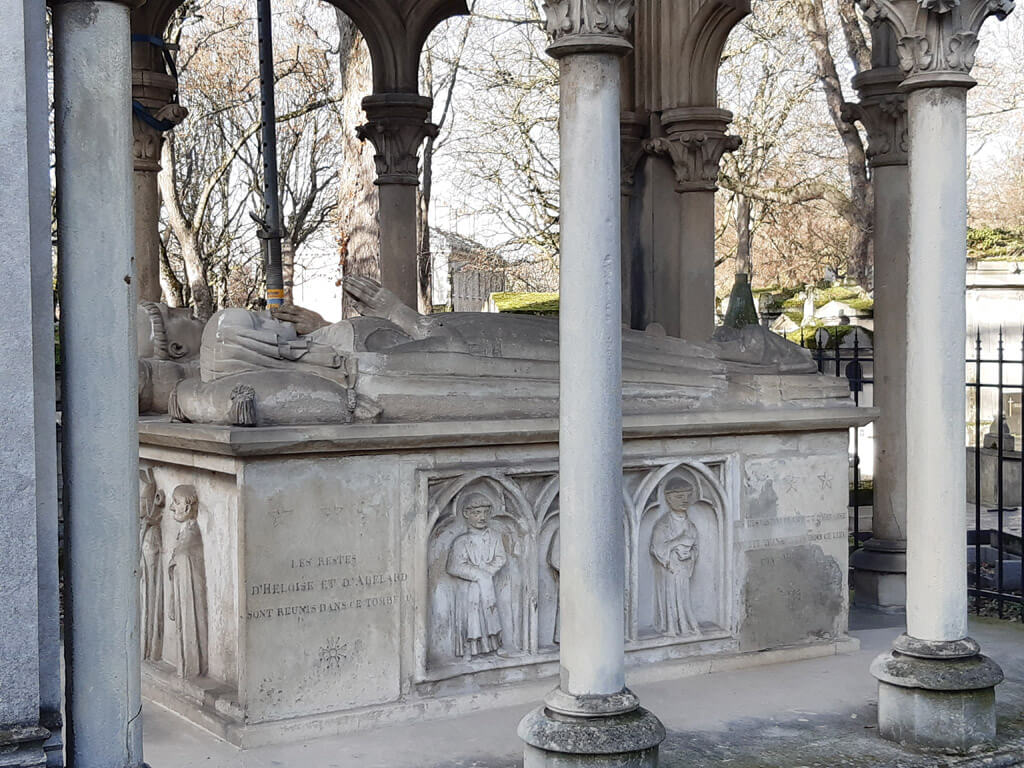
Héloïse and Abélard are two famous lovers of Medieval Paris, the Romeo and Juliet of France! You can read about Héloïse and Abélard’s impossible love and tragic ending in this post.
At the time of its opening, the Cemetery of Père Lachaise was considered too far from the city and attracted few funerals. Moreover, most people preferred to be buried at the foot of their favorite bell tower, so in 1804, the Père Lachaise Cemetery contained only 13 graves.
To attract more burials, the remains of French poet Jean de La Fontaine and famous French playwright Molière were moved to the Cemetery within a year of its opening. This helped raise the profile of Père Lachaise, but it still didn’t prove particularly popular.
It wasn’t until Joséphine Bonaparte had the remains of Abélard and Heloïse moved to the Père Lachaise in 1817 that the Père Lachaise Cemetery became “à la mode,” with people clamoring to be buried among the famous citizens. With Abélard and Heloïse entombed near its entrance (tomb #4 on this Père Lachaise map), the number of interments grew from a few dozen to 33,000 within a few years. Merci, Héloïse et Abélard!
The Man Who Made the Dead Speak
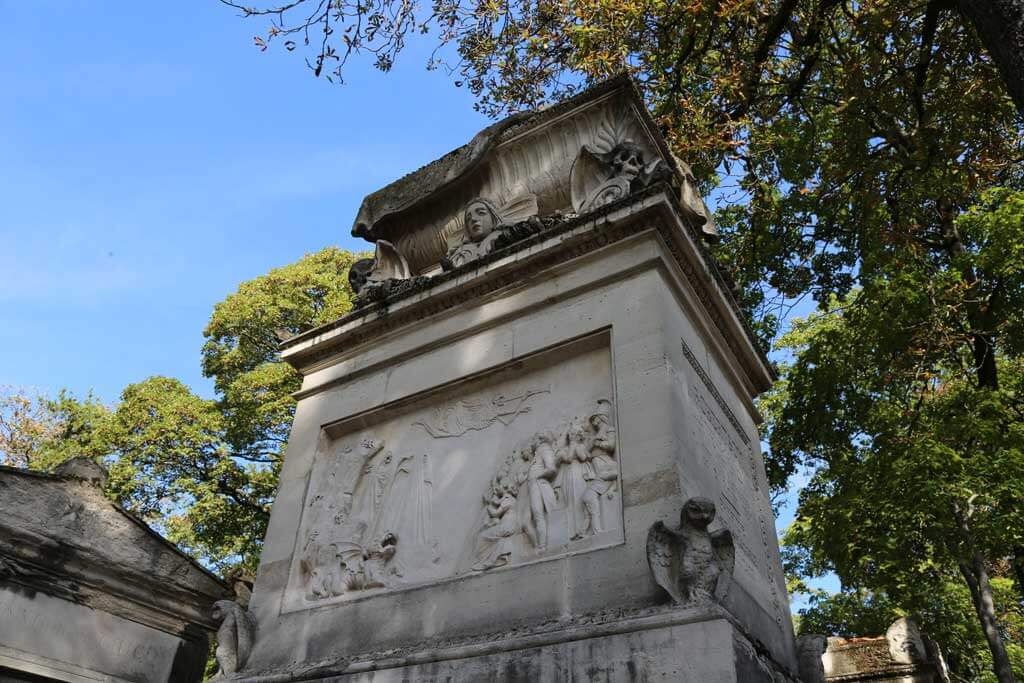
In the 8th Division, there’s one of the most fantastic tombs of the Pere Lachaise Cemetery, which belongs to Etienne-Gaspard Robertson (1763-1837). Born in Liège, Belgium, Robertson defined himself as a physicist, phantasmagorician, and aeronaut, according to his epitaph (tomb #5 on this map of Père Lachaise Cemetery).
Robertson was a talented painter from an early age and made a living through small painting commissions while attending lectures on the burgeoning science of electricity. These combined talents were first applied in a plan to construct Archimedes’ light-reflecting death ray for the government of France. The project went nowhere, but preparing for it gave Robertson a practical, working knowledge of optics that inspired his experiments: elaborate horror spectacles known as phantasmagoria.
At the Pavillon Echiquier, then at the Couvent des Capucines, he set up dark performance halls lit by candles, richly decorated but sinister. Inventor of the fantascope, he projected images of ghosts or skeletons onto canvas screens using a system of glass plates and mirrors. He even awakened dead characters like Marat, Danton, or Robespierre! His performances thrilled and terrified Parisians for four years before moving with his inventions to other places in Europe and North America.
The phantasmagoria remains Robertson’s most enduring legacy, eclipsing his scientific contributions to optics and his pioneering use of hot air balloons to collect atmospheric and meteorological data. All these aspects of his life are documented by the decoration and phantasmagoric sculptures of his tomb.
Not With My Heart
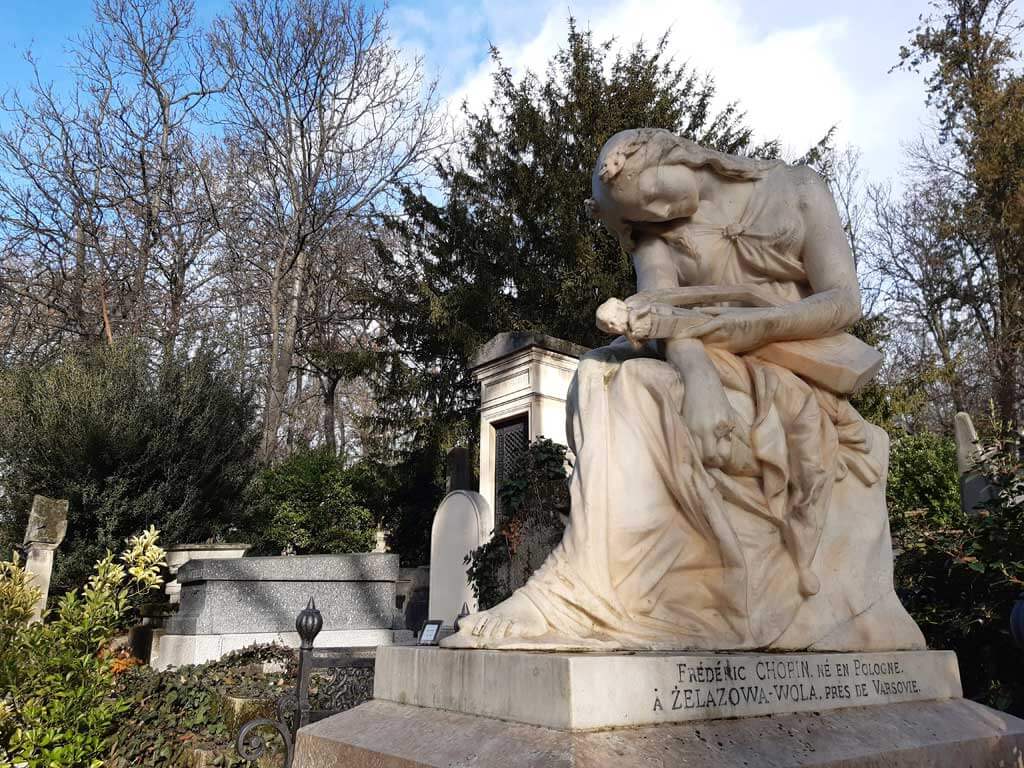
Fredrick Chopin is one of the most famous people buried at Père Lachaise (tomb #6 on this Père Lachaise map). The fear of being buried alive led Chopin to request the removal of his heart – he wanted to be sure not to wake up 6 feet below the ground! He also made the request that his heart be sent back to Poland, his home country, knowing that his body would never leave Paris.
When he passed, Chopin’s eldest sister complied with his will, taking the heart before his body could be buried and secreting it back to Poland in a jar of booze. She hid the package under her cloak, avoiding officers’ questions about the body part she was carrying. She could smuggle it to the Holy Cross Church in Warsaw, where it was buried beneath a small monument.
Forever Love
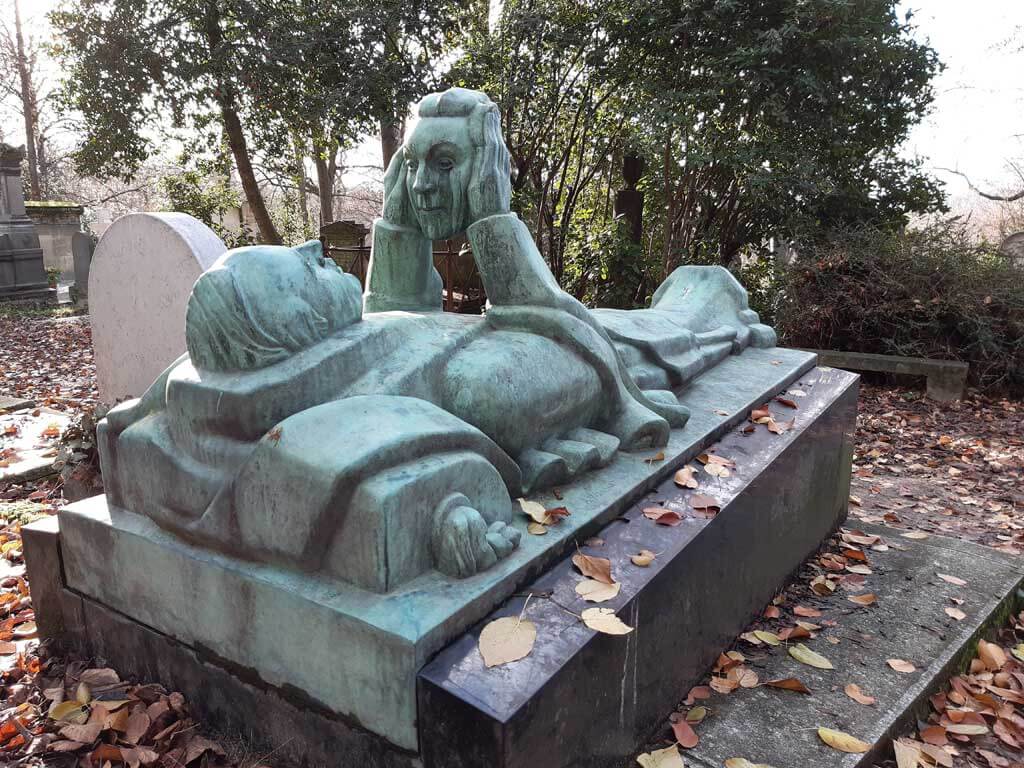
We don’t know much about the musician, actor, and architect Fernand Arbelot (tomb #7 on this Père Lachaise Cemetery map). However, he has left quite a legacy in the form of a unique tomb.
The tomb depicts him lying on his back, holding up a disembodied head and gazing into its cold, stone eyes. An epitaph reads, “They were amazed at the beautiful journey which led them to the end of life.”
Legend states that Arbelot’s wish behind the tomb design was to gaze upon his wife’s beautiful face for all eternity. However, looking at the mask, it’s as if the mask was crying.
Some unsubstantiated claims indicate that he sped that desire along by killing her wife before taking his own life in a murder-suicide. Which version do you like most?
From here, we suggest taking a short detour to Avenue de la Chapelle to admire the views (point #8 on this map of Père Lachaise Cemetery). On 2 July 1652, young King Louis XIV witnessed the fighting of The Fronde raging in the Faubourg Saint-Antoine in the company of Mazarin and the court. A cannonball fired from the Bastille by his cousin, the Grande Mademoiselle, would have ended up at his feet. Miracle! The hill was then named Mont Saint-Louis in homage to this Royal visit.
After taking in the views, walk back and look for the Chemin du Dragon (marked on this Père Lachaise map as Chemin des Chèvres).
The Path of the Vampires?
In the Cemetery of Père Lachaise, Le Chemin du Dragon (Dragon’s Path in English) pays homage to Antoine Guillaume-Lagrange, an officer who died in Poland during the Napoleonic Prussian campaign. Although it designates the soldiers traveling on horseback, the word dragon mainly evokes the disturbing mythological creatures associated with evil. From the Latin draco – dracul in Romanian – and some of the tombs along the path, it was only one step for this path to be nicknamed the Path of the Vampires!

Along this path, you will find the mausoleum of a mysterious Countess (see the next story) and the tomb of Georges III Bibesco, prince of Valachia (ancient Romanian medieval principality).
Georges III Bibesco’s title comes from his ancestor, Vlad III Tepes, a cruel prince who reigned in the 15th century, also known as Draculea, son of the Dragon. We don’t know if he believed the stories related to his ancestor, but his tomb (point #10 on this Père Lachaise Cemetery map) is surmounted by a royal eagle, holding in its claws a crucifix and a sword resembling a stake, the vampire hunter’s favorite weapons…
A Mysterious Russian Countess

Also, in the Chemin du Dragon, Countess Demidoff’s last resting place is the Cemetery’s second-largest mausoleum (point #9 on this Père Lachaise map). But most interesting is the story of the Countess’ testament.
The Deminoff was one of the wealthiest families in Russia until the fall of the last Tsar. Bored of his husband, Countess Elisabeth Alexandrovna Strogonoff-Demidoff moved to Paris, where she lived until he died in 1818.
In her testament, the Countess donated her fortune to whoever could watch over her corpse for a whole year. The candidate must be alone with the dead for 365 days and nights before the whole Countess’ fortune is won. Though a servant would bring meals regularly to the watcher, any attempts to communicate with this employee were strictly forbidden. The contender was allowed to leave their gloomy lodgings once a day “to stroll among the tombs for an hour.” But this walk had to be undertaken after the Cemetery’s gates had closed for the night or before they opened in the morning.
Needless to say, the Countess received thousands of requests to keep her company. A dozen or so even tried it, and they became mad – claiming that the Countess’ ghost had visited them and had tried to suck the life out of them – or committed suicide. The Cemetery has received requests until 1980.
Brave Amongst Braves

At the end of the Chemin du Dragon, in the 29th Division (#11 on this map of Père Lachaise Cemetery), there’s the tomb of Marshal Michel Ney, one of Emperor Napoléon Bonaparte’s famous military commanders. He was nicknamed “brave amongst braves” by Napoléon I himself.
However, when Napoléon abdicated, Ney was the first Marshal to abandon him to put himself in the services of the new King Louis XVIII!
While he promised the new King to bring Napoléon in an iron cage, he changed his mind again and rallied to the Emperor. However, the defeat at Waterloo in 1815 definitely prevented Napoléon’s return to power. Back to the throne, King Louis XVIII and the Chambre des Pairs sentenced Maréchal Ney to death, and he was shot to death in an alley of the Luxembourg Gardens. This is when the story ends, and legend begins…
One of South Carolina’s most fascinating stories and greatest mysteries is the true identity of a teacher who went by the name Peter Stuart. He arrived by ship in Charleston in 1816. He was a very intelligent man – he could speak at least five languages and was a poet and an expert in mathematics – and he was an expert horseback rider and swordsman. His only defect is that he appreciated booze perhaps too much.
One spring day in 1821, the professor was found bloody in his sheets, knife in hand. He had just attempted suicide. The day before, the gazette had announced the death of Napoléon on the Island of Saint Helena. Later, he said in despair that he could never go home to France to be with his wife and children (he never married in the US).
Over the years, Peter Stuart said and did enough to make people believe that the rumors about his past rang were true. Finally, in November 1846, when Stuart was dying of pneumonia, his doctor asked about his true identity. Rising from his bed, he told the doctor that, indeed, he was Marshal Ney. After he died, his body was examined. It was covered in scars, said by some to match the wounds Marshal Ney had received in battle.
In 1903, work was undertaken on the tomb of the Ney family at the Cemetery of Père Lachaise, which required temporary exhumations. Then, a gravedigger claimed that the Marshal’s coffin was empty. The gravedigger suddenly disappeared, and the secret remains hidden.
The Man Who Saved France from the Famine
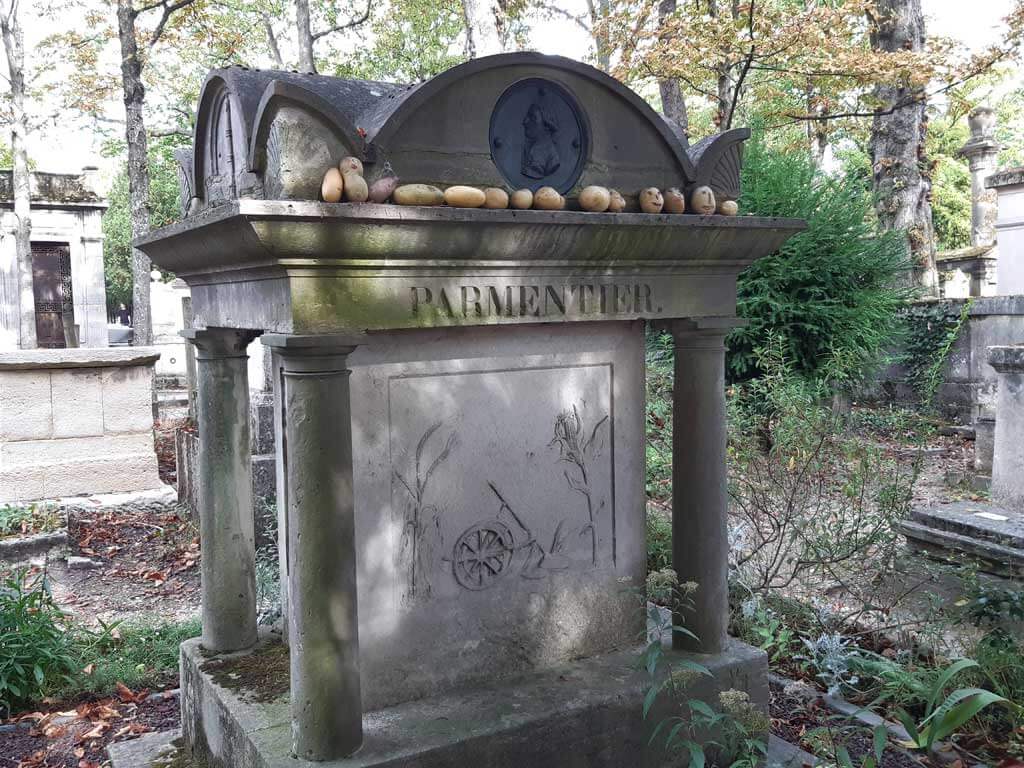
The 39th Division (tomb #12 on this Père Lachaise map) houses the grave of Antoine Parmentier (1737-1813), the promoter of the potato in France. Since his funeral, fans of these tubers have placed them daily on the edge of Parmentier’s grave, sometimes with kind little words (e.g., “Thanks for the fries!”), engraved in the potatoes.
During his captivity in Prussia, Parmentier could appreciate the nutritional virtues of the potato. Won over by the nutritional value of the vegetable, Parmentier decided, upon his return to France, to develop its use to resolve the problem of endemic famines, which were still ravaging France at that time.
In addition to this research, Parmentier began advertising his favorite food. He regularly invited illustrious personalities, scientists or notables, to his table, and he only served them dishes prepared with “parmentière,” as he liked to call the tuber. King Louis XVI heard about this new vegetable and, as a great lover of discoveries, began to take an interest in it.
But the most challenging part was to convince the people! At that time, all the vegetables growing below the ground were considered a product of the devil. And he solved the problem arousing envy and lust.
Thus, to make people believe this was a prestigious vegetable reserved for the King and his entourage, Parmentier had his vegetable garden guarded by royal guards… But only during the day! At night, he let thieves and curious people discover this precious vegetable that the court jealously guarded!

On the way to the next tomb of this Père Lachaise tour, you will pass by the remains of Molière and Jean de La Fontaine (#13 on this Père Lachaise Cemetery map). They were relocated to the adjoining plots in 1817 as part of the marketing strategy previously mentioned, although for various reasons, no one knows for sure whether it is really their bones that lie in the graves. Take Chemin Laplace, turn left on Chemin des Anglais (where you can see Adelaïde’s supposed tomb, #14), then head to point #15 in the 92nd Division.
The Erotic Tomb
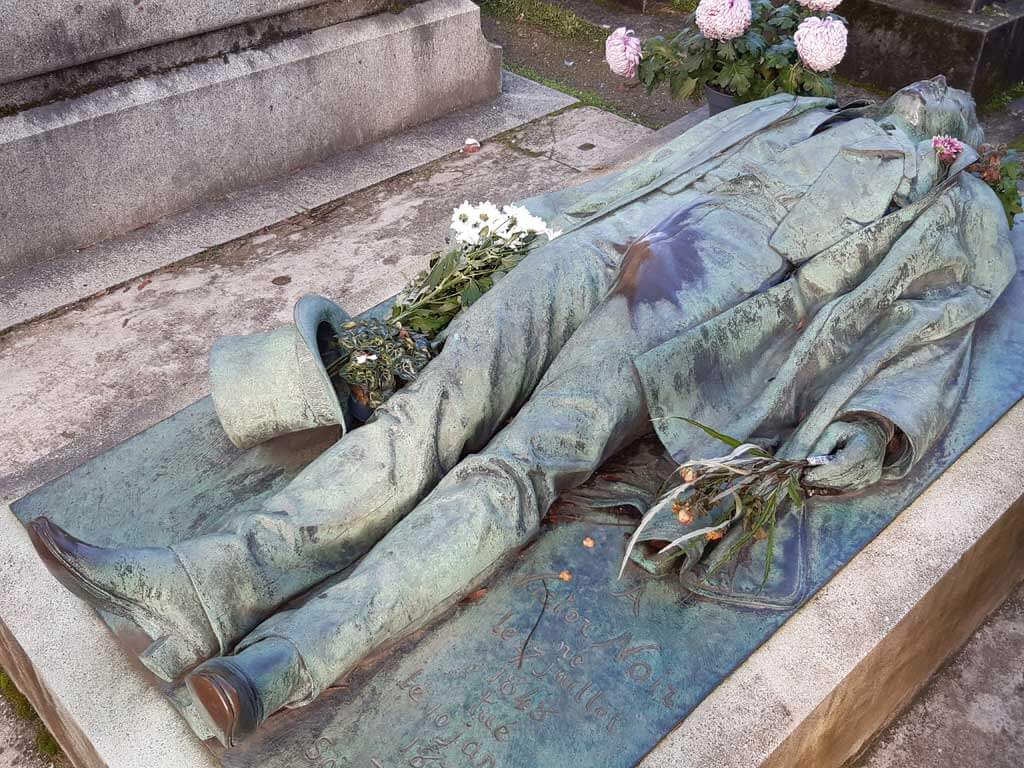
A journalist for La Marseillaise, Victor Noir (1848-1870) died during a duel with Napoleon’s cousin. His tomb represents his remains just after the fight, and we can even see the hole in his chest.
But this is not the first thing to catch your eye about this tomb! For the sake of realism and honesty, the sculptor also reproduced the post-mortem erection of poor Victor.
Victor Noir’s tomb became a symbol of fertility (or other), and since then, women have come to rub shoulders with this bronze penis to increase their chances of having children. You will quickly notice the depigmentation of the color.
And there you have it, an alternative Père Lachaise walking tour that covers some of the mysteries and legends of the most famous cemetery in Paris. We didn’t have the time to visit the tomb of Jim Morrison, Oscar Wilde, or Marcel Proust, but we hope you had a great trip back in time!

